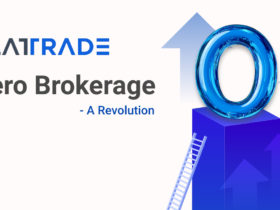Domestic steel companies are likely to face a 35-40% year-on-year (YoY) drop in exports to 10-12 million tonne in this fiscal due to the 15% export duty imposed on several finished steel products in May by the Indian government, according to CRISIL Research analysis. The hike in export duty was aimed at curbing this inflation.
However, domestic demand that grew 11% YoY, driving domestic prices to all-time highs led to soaring construction costs and multiple price hikes by makers of automobiles, consumer appliances and durables to pass on the increase, thereby tamping domestic demand.
Meanwhile, steel exports had reached a record high of about 18.3 million tonne in financial year 2022 and continues to see momentum due to the disruption caused by the ongoing Russia-Ukraine conflict. In addition, domestic steel manufacturers also benefited from the European Union’s (EU) decision to increase India’s export quota, amid a big price difference in the two regions. This decision minimised the impact of a 25% tariff on steel imports imposed by the EU.
Hetal Gandhi, Director, CRISIL Research, said, “The duty-driven price correction will improve availability of steel in the domestic market as finished steel exports dwindle and will directly impact India’s export volume in the current fiscal.” Gandhi added that steelmakers will attempt to avoid the duties by increasing exports of alloyed steel and billets, but that is unlikely to compensate for the loss of finished steel exports.
The duty revisions will have a material impact on the export volumes of iron ore and pellets and its combined export volume is expected to see a massive drop from 26 MT last fiscal to 8-10 MT in the current fiscal.
Meanwhile, the rating agency’s Associate Director, Koustav Mazumdar, said, “The duty revisions have alleviated the uncertainties linked to global markets and set the tone for a quicker correction in the near term. As of mid-June, prices are already at Rs 62,000-64,000 per tonne and can be expected to trend below Rs 60,000 per tonne by the end of the fiscal.”
Outlook
The rating agency noted that there will be a difference in margin contraction for large players and small- and mid-sized ones. Large integrated players with flat-steel based capacities export about 20% of its output, while small- and mid-sized manufacturers are mostly in the long steel segment, where exports are negligible.
Therefore, the rating agency said it could see a relatively higher contraction in operating margins of large players as export opportunities dwindle, while it would be less pronounced for small-and-mid-sized players, especially with raw material cost pressures alleviated to an extent.





